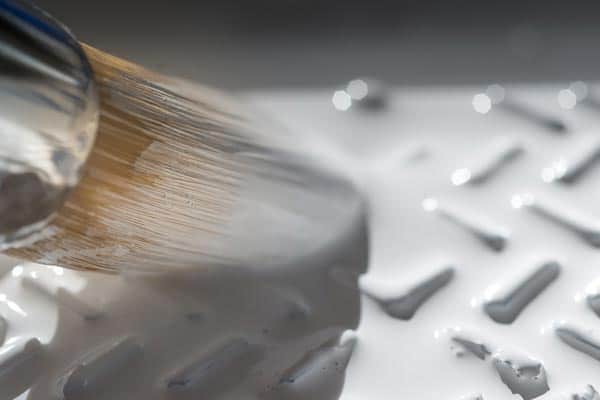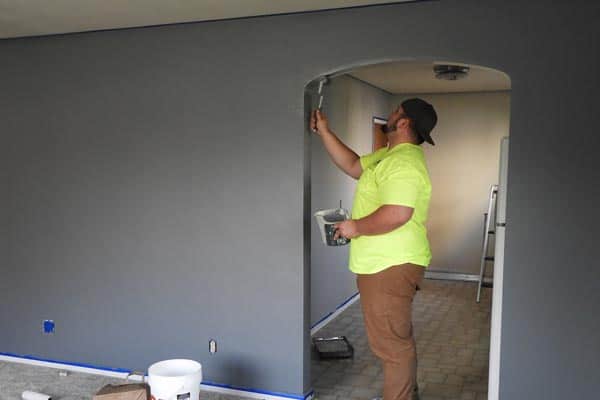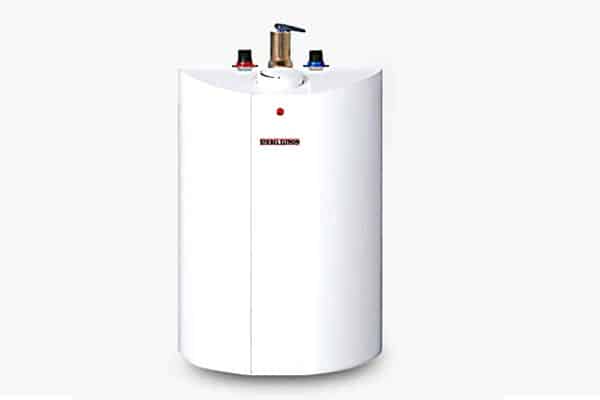How Long Paint Takes to Dry – Oil-Based Versus Latex
When you have to finish a painting project or paint a room in your house, one of the most important things you do is plan correctly.
Planning how you’re going to take on this project can help ensure that you don’t have to redo any sections you’ve already done or that you don’t have to duplicate any of your efforts.
How Long Does It Take for Paint to Dry?
Oil-based paints usually take between six and eight hours to dry, but latex paint can take as little as an hour to dry and be ready for a second coat. If you’re trying to finish your painting project quickly because you’re pinched for time, latex could be a good option because it has a much quicker drying time between coats. Which paint you pick will depend on the use too.
Many people consider oil-based paint to be much more durable and able to withstand constant touching and scuffs without damage, so it works well in high-traffic areas of your home. However, latex has come a long way in terms of durability, and it’s easier to use for beginners.
We’re going to outline the important points with these types of paint, and you can choose the one that is best for you.
Understanding Drying or Curing
When people usually talk about drying or curing, they’re talking about the same thing. They’re not the same, though, and you want to understand the difference between the two.
If the paint is cured or dry will depend on what types of activities you can take, and we’ll break it down for you below.
Cure
Paint takes a significantly longer period to cure than it does to dry, and curing happens when your paint reaches the maximum hardness because all of the solvents have evaporated.
Paint is very fragile before it cures, and you can cause indentations that are irremovable if you bump into it or hang anything up before it’s done curing.
Curing can take days or weeks, and you can check to see if the paint cured by pushing your fingernail into a space that isn’t highly visible. You may hear people call this the paint’s set time.
Dry
Paint is dry when it’s dry to the touch if you put your hand on it. Dry paint reaches this stage when enough solvents inside the paint evaporate to take the sticky feeling away from the paint.
Most paint takes between one and eight hours to dry from when you apply it, but you still want to wait a few hours to apply a second or third coat after it dries. If you’re not sure, always double-check the manufacturer’s directions.
How Paint Types Impact Drying Time
The type of paint you picked out to paint your room will impact how long it takes the paint to dry and be ready for you to apply the next coat.
Oil-based and latex are the two main types of paint people use to paint their interior rooms, and they have marked differences between the two.
Oil-Based Paint
Oil-based paints have a much longer drying time than latex, and they used to be extremely popular in homes until that popularity started to wane.
The reason they went down in popularity is due to the long drying time because it borders on extensive. Each coat can take six to eight hours to dry from the application time.
You can apply a second coat on the same day between eight and ten hours after the first, but it’s more common to leave it to the next day.
Because of this drying time, many people have chosen not to use this type of paint in their homes.
However, oil-based paint will cure faster than any other paint at three to seven days, and it’s very durable once it cures.
Latex Paint
Latex-based paints are known for their very quick drying times, and it dries from the outside in, unlike oil-based paint.
This will shorten the drying time but extend the time it takes to cure. Latex paint is typically referred to as acrylic latex because it’s had water added to thin it, and one benefit of these paints is that they’re easy to wash.
Each time you paint with latex paint and wash your rollers or brushes out, the paint will come right out with minimal effort on your part.
Factors That Impact How Long Paint Takes to Dry
There are a few important factors that come into play when you’re trying to figure out how long it takes paint to dry, regardless of the type you chose.
It’s important that you take these factors into consideration when you’re planning out the project.
Humidity
Higher humidity levels add moisture into the air, and humidity can drastically impact how long it takes paint to dry.
If it has rained recently, the humidity levels are most likely on the high side, so you’ll want to avoid painting until they drop again.
The humidity levels should be at 50% or lower, but when do you paint when your area has humidity levels that are always this high?
Ideally, you’ll paint when you’ve had a few days in a row of dry weather. The reasoning behind this is that when there is a high level of moisture in the air, the water content in your paint won’t evaporate quickly enough. In turn, this will lead to damage to your paint’s final layer.
Temperature
What the temperature is of the room or house you’re painting will directly impact how your paint cures or dries. It’s very important that it’s at least 50-degrees Fahrenheit because the paint won’t dry at all if it’s too cold.
However, the paint’s top layer will dry too quickly if the temperature is over 70-degrees Fahrenheit, and this can lead to blisters and bumps because the bottom layer didn’t actually dry out.
Ventilation
Ventilation can impact how quickly your paint dries in a few ways. A well-ventilated area will help your paint dry quicker.
If the space doesn’t have good ventilation and the humidity and temperatures outside are mild, you should open a window to help with the ventilation.
You can also consider getting a box fan and running it in the room to increase the ventilation if you’re worried about it.
A box fan will increase the ventilation while helping to pull down the humidity level in the room.
A ceiling fan is another good choice if you don’t have a box fan available, and creating cross-ventilation will help with the room’s airflow.
Tip:
- Always follow the manufacturer’s instructions on the paint can. They will give you the best guidance for your specific type of paint.
How Long Paint Takes to Dry Based on Application
The amount of time it takes your paint to dry can depend on how you apply it too. You want to ensure that when you apply the paint, whether you use a brush or roller, that it doesn’t go on too thick because the drying time will be much longer. The paint can also dry unevenly or with spots or bubbles in it.
Paint Drying Time Frequently Asked Questions
Since this could be a large-scale project you’re taking on, it’s common to have a few questions relating to the process in general. We’ve rounded them up for you below.
1. How long do you wait between coats?
How long you wait between coats will depend on the type of paint you picked out. OIl-based paint will take a much longer time to dry that is closer to 24 hours.
However, you can apply a second coat to most latex-based paints after four hours. Just make sure it’s dry before you put a second coat on.
2. How can you tell if the paint is dry?
You can tell if your paint is dry if you touch it and it doesn’t feel sticky. Tacky paint will have to wait for another hour or two to dry. Although you may be tempted to paint over tacky or sticky paint, this can lead to duplicate work.
3. How many coats of paint should you use?
The number of coats you apply is usually a matter of your personal preferences, but you’ll usually want at least two coats. Some colors will need more coats, depending on the richness you want to end up with.
Darker colors need a few more coats to get deeper tones, and if you’re going to use a light color, the amount of coats you need depends on what color you’re trying to paint over.
4. Do you need a primer?
There are a few instances where you do need a primer, and the first one is when you’re trying to put a lighter color over a darker one.
If you want to paint a lighter color over a darker one, like a yellow over a red, you won’t end up with true colors.
Primer gives you a solid base to work with, and it’s also a good idea if you’re painting drywall. Drywall soaks up paint, so the primer layer will prevent you from using a ton of your chosen color.
5. Do you start by painting the ceiling, walls, or trim?
Everyone has their own approach to painting a room, but painters will generally prime the walls and ceiling first when they build a house.
They then install the trim, caulk it, prime it, and then coat it with paint. You may want to approach this project in the same order.
Even though you may not be repainting your ceiling, it’s good to keep it any mind and consider doing it at the same time.
When you paint, you’ll want to start with the walls and finish them before going to the trim. The reason behind this is that if anything accidentally splatters, you won’t have to reapply paint to cover what you already painted.
6. How long will your paint take to dry?
Although we’ve given you very specific time ranges above, this is the short and simplified version. Oil-based paints can take between six to eight hours from the application to dry, and latex paints can take an hour.
You can apply a second layer of latex paint in around four hours, and you can apply the second coat of oil-based paint the next day, around 24 hours after you apply the first. It’s always a good idea to check the manufacturer’s instructions to be on the safe side.
Bottom Line
How long it takes your paint to dry will depend on the type of paint you pick out, and we’ve outlined all you need to know about the two most popular choices.
Allowing it to dry between coats will help you get professional-grade results, and you can carry on painting every room in your home.






